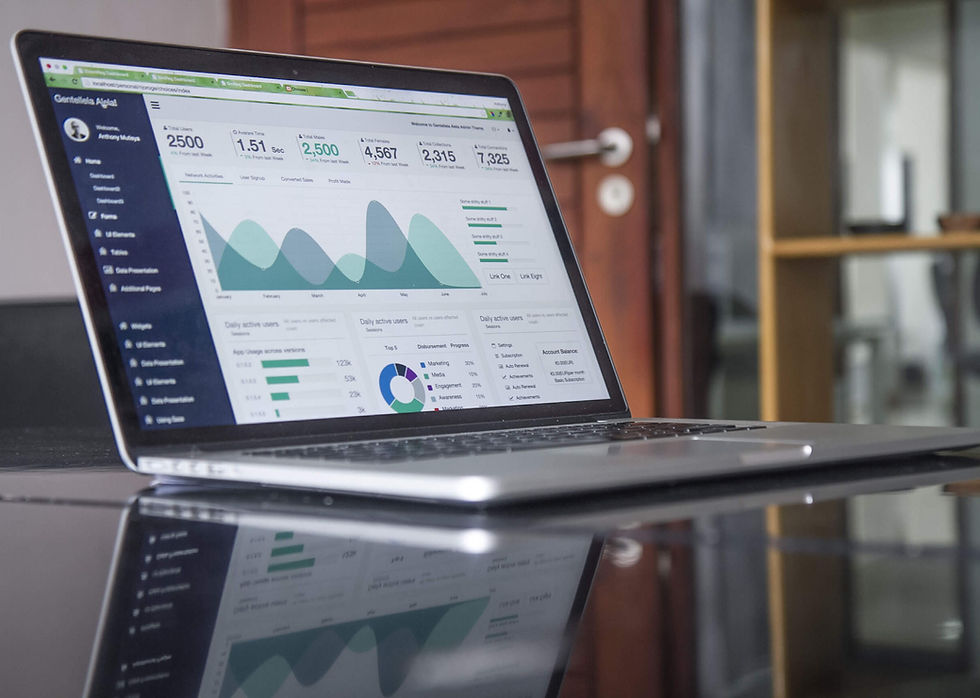5 reasons Brick-and-Mortar Retailers Need Digital Transformation
- Dayta AI
- Nov 27, 2020
- 4 min read
Updated: Dec 16, 2020

While many retailers are struggling nowadays, others are thriving despite all the pressures. What is their secret? How do some retailers go against the trend of decline and use technology to draw in new committed customers?
In this article, we will examine the retailers who are finding a new way to succeed in the retail industry and consider how traditional retailers can embrace new opportunities to grow their customer bases and weather the storms battering the retail industry.
21st Century Model for Brick-and-Mortar Stores
While the ‘retail apocalypse’ may be something of a media invention, it is undeniably true that retail is going through a period of transformation. Of course, the soaring popularity of online shopping is part of this story, but it is also about rising costs, changing customer expectations, and a consolidation of retail environments following years of expansion.
As businesses face the worst recession in recent years, retail streets and shopping centers become overwhelmed with empty units. While Internet shopping becomes more efficient and effective, traditional retail needs new reasons to exist. Shoppers need compelling new reasons to walk into the high street.
Given the various pressures stressing retailers, it might seem that the future is bleak for retailers. However, the news is not all negative. While some retailers are struggling, a few are fighting back and increasing sales.
Amazon has made major moves into physical retail, through its acquisition of Whole Foods and with their own Amazon Go stores. Amazon’s strategy is partly about obtaining the physical interface that stores provide, and partly about reducing rising shipping costs by giving people convenient locations to collect and drop off parcels. Amazon knows that, without physical retail environments, they can never have truly personal experiences with their customers – a huge disadvantage in the age of personalization.
In China, e-commerce giant Alibaba is investing $8 billion in retail stores, because they also recognize the importance of physical outlets in their plans for growth.
These success stories are proof that retail has plenty of opportunities. Yes, there are challenges facing the industry, but the reality is that some retailers are thriving despite these challenges because they give customers compelling reasons to visit their shops. The challenge, ultimately, is that businesses need to find a 21st century model for physical retail.
Bring Technology In-Store
Online stores run hugely on technology, but they do not own technology. Technology can be used in many ways to complement real-world experiences, making them more meaningful and personal. Technology can support customer service staff, engage customers, capture insights, enable offline-to-online ordering, and help customers browse ranges.
In JD Sports, part of their success may be attributed to their use of innovative technology that creates a premium feeling in-store. Staff can request shoes on a tablet, which are then delivered into the store on a conveyor belt. This reduces waiting time for shoes to try on and gives sales assistants more opportunities to help customers explore their options.
Create Destinations – Not Just Shops
Is your shop just a shop or does it have more to offer? Retailers are increasingly looking for ways to expand their offerings so that people feel more welcome to stay and explore, rather than just dashing in to make a purchase. A common approach is to add a coffee shop or bar to your store, but some Topshop stores are adding DJs to improve the atmosphere for shoppers.
Disney Stores recognize that children want to touch toys and see how they work, so they make their products accessible and accept a little mess-making as a positive side-effect of being popular with kids. Peter Watson, MD of digital marketing agency Distract, reckons that Toys R Us should have stopped trying to be purely toy stores, and should have evolved into spaces to try and experience toys and fun activities. “This should have included entertainment sections in-store, face painting zones, and coffee centers for parents.”
Connect Experiences
How can digital technologies embellish the shopping experience? Can you help customers choose products, or offer ancillary content that supports their purchases, or adds value?
For example, you could help customers assess their needs, and then provide guides, articles, advice, or recipes related to their choices. These assets can be delivered digitally by photo capture, QR code, or SMS, so the customer instantly has the information on their phone.
Deliveroo and Just Eat are good examples of digital platforms that are providing a boost for high-street casual dining establishments. These services may be a forerunner for other retailers to bring digital transformation into businesses by connecting seamlessly to customers, partners, and suppliers.
The Future Will Be Digital
It is clear that online shopping will continue to increase. But it will eventually find its limit – its growth in China, the world’s mobile commerce leader, has already slowed to low double digits, and retail streets will rebalance according to the new level of demand.
In the meantime, the challenge for retailers is to find new ways to incorporate technology into their traditional stores, while also creating environments that are worth leaving the house for. Retailers that excel in this changing climate will be those who can give customers an experience that is greater than the sum of its products. Retailers need to exploit the full potential of their real-world stores and do things that online retailers just cannot achieve. At the same time, physical retailers must adopt technology so that their stores don’t fall behind the capabilities of their digital competitors; customers should never have to lose out on choice, flexibility, or convenience because they favor a physical shopping experience over a digital one.
Cyclops is a retail analytics system that can help retailers generate insights into how their customers shop inside their stores. To understand more about how Cyclops can help retailers digitally transform their stores visit our website: https://dayta.ai



Comentaris